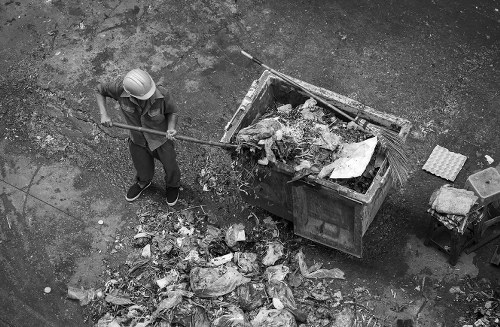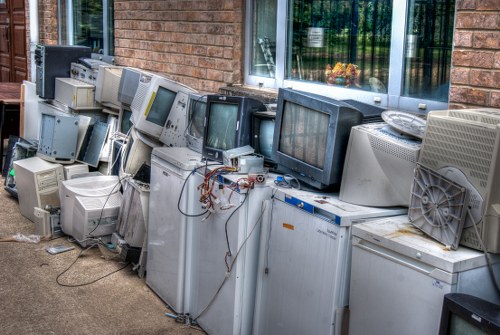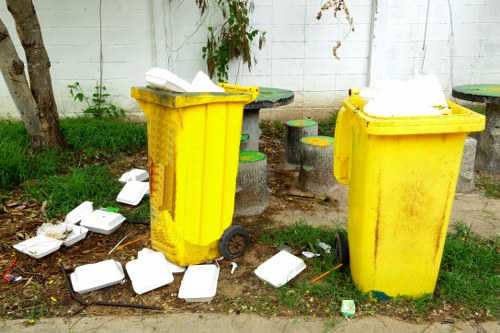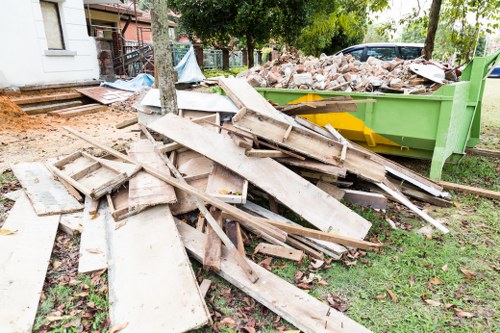Efficient Construction Waste Clearance in Barnet

Construction projects, whether large or small, generate a significant amount of waste that needs proper management. In Barnet, efficient construction waste clearance is essential not only for maintaining cleanliness but also for adhering to environmental regulations. Proper waste clearance ensures that your construction site remains safe and that materials are recycled or disposed of responsibly.
Managing construction waste can be a daunting task without the right expertise and resources. However, with the right approach and professional assistance, the process becomes streamlined and efficient.
In this article, we will explore the best practices for construction waste clearance in Barnet, the benefits of professional services, and how to choose the right service provider to meet your specific needs.

Why Construction Waste Clearance is Important
Effective waste clearance is crucial for several reasons:
- Environmental Protection: Proper disposal and recycling of construction waste minimize the environmental impact.
- Safety: Removing debris and waste materials from the site reduces the risk of accidents.
- Compliance: Adhering to local regulations ensures that your project avoids legal issues.
- Cost Efficiency: Efficient waste management can lead to cost savings in the long run.
By prioritizing waste clearance, construction projects contribute to a sustainable future while maintaining operational efficiency.
Moreover, responsible waste management reflects positively on your company's reputation and commitment to environmental stewardship.

Types of Construction Waste
Construction waste can be categorized into several types, each requiring different handling methods:
- Concrete and Bricks: These are heavy materials that can often be recycled into new construction products.
- Wood: Scrap wood can be repurposed or used in other industries, reducing the need for new lumber.
- Metals: Metals like steel and aluminum can be melted down and reused, promoting a circular economy.
- Plastics and Insulation: These materials require specialized recycling processes to ensure they are disposed of safely.
- Hazardous Materials: Items like asbestos or chemicals need to be handled with care to prevent environmental contamination.
Understanding the types of waste generated helps in planning the clearance process effectively.
Different materials require different disposal methods, and knowing this information ensures compliance with local regulations.

Benefits of Professional Waste Clearance Services
Hiring a professional construction waste clearance service in Barnet offers numerous advantages:
- Expertise: Professionals have the knowledge and experience to handle various types of construction waste efficiently.
- Time-Saving: Delegating waste clearance allows you to focus on core construction activities.
- Compliance: Professionals ensure that all waste is disposed of according to local laws and regulations.
- Recycling: Many services prioritize recycling materials, contributing to environmental sustainability.
- Cost-Effective: Preventing fines and reducing waste management costs in the long run.
By leveraging professional services, construction projects can maintain momentum without unnecessary delays.
Additionally, these services often provide comprehensive solutions tailored to the specific requirements of your project.

Choosing the Right Waste Clearance Service in Barnet
Factors to Consider
Selecting the appropriate waste clearance service is critical for the success of your construction project. Here are key factors to consider:
- Experience: Look for companies with a proven track record in handling construction waste.
- Licensing and Certification: Ensure the service provider complies with all local regulations and holds necessary certifications.
- Services Offered: Check if they offer comprehensive services, including recycling, hazardous waste management, and on-site clearance.
- Customer Reviews: Positive feedback indicates reliability and quality of service.
- Pricing: Compare quotes to find a service that fits your budget without compromising on quality.
Taking the time to evaluate these factors ensures that you choose a service that aligns with your project’s needs.
Moreover, a reliable service provider can become a long-term partner for all your future construction waste management needs.
Steps to Effective Waste Clearance
Implementing a structured approach to waste clearance enhances efficiency:
- Assessment: Evaluate the types and quantities of waste generated.
- Planning: Develop a clearance schedule that aligns with the construction timeline.
- Collection: Use appropriate containers and transport methods for different waste types.
- Recycling and Disposal: Separate recyclable materials and ensure proper disposal of non-recyclable waste.
- Monitoring: Continuously oversee the process to address any issues promptly.
Following these steps ensures a smooth and compliant waste clearance process.
Additionally, regular monitoring helps in identifying opportunities for improving waste management practices.
Environmental Impact
Construction waste clearance plays a significant role in reducing the environmental footprint of construction projects. By recycling and properly disposing of waste, the demand for new raw materials decreases, conserving natural resources.
Furthermore, minimizing landfill usage helps in reducing greenhouse gas emissions, contributing to efforts against climate change.
Adopting sustainable waste management practices also enhances your project’s reputation as an environmentally responsible initiative.
Local Regulations in Barnet
Compliance with local regulations is essential for construction waste clearance in Barnet. Familiarize yourself with the following:
- Waste Disposal Permits: Obtain necessary permits before disposing of construction waste.
- Recycling Requirements: Adhere to guidelines for recycling specific materials.
- Hazardous Waste Handling: Follow protocols for safely managing hazardous materials.
- Notification Procedures: Inform local authorities about waste clearance activities as required.
Staying informed about these regulations ensures legal compliance and prevents potential fines.
Regularly consulting with waste clearance professionals can help you stay updated on any regulatory changes.
Innovative Solutions in Waste Clearance
Advancements in technology have introduced innovative solutions to construction waste management:
- Automation: Automated systems streamline the sorting and processing of waste materials.
- Recycling Technologies: Modern recycling methods increase the efficiency of material recovery.
- Data Management: Software tools help track waste generation and disposal, enhancing accountability.
- Green Technologies: Sustainable practices and technologies reduce the environmental impact of waste clearance.
Embracing these innovations can lead to more effective and sustainable waste management practices.
Additionally, staying ahead with the latest technologies ensures that your waste clearance processes remain efficient and compliant.
Cost Considerations
Budgeting for construction waste clearance is an important aspect of project planning:
- Volume of Waste: The amount of waste generated directly impacts clearance costs.
- Type of Waste: Hazardous materials may incur higher disposal fees.
- Service Frequency: Regular clearance services can be more cost-effective than sporadic pickups.
- Recycling: Recycling can reduce disposal costs and may even generate revenue from recyclable materials.
Careful planning and selecting the right service provider can help manage and optimize these costs.
Additionally, investing in efficient waste management can lead to long-term savings and environmental benefits.
Case Studies
Examining successful waste clearance projects in Barnet provides valuable insights:
- Residential Construction Project: Efficient waste management led to timely project completion and cost savings.
- Commercial Development: Sustainable practices reduced the environmental footprint and enhanced the developer’s reputation.
- Renovation Projects: Proper clearance of mixed waste streams ensured compliance and minimized disruptions.
These case studies highlight the importance of strategic waste clearance in various construction contexts.
Learning from these examples can help in implementing best practices in your own projects.
Future Trends in Waste Clearance
The future of construction waste clearance in Barnet is poised for significant advancements:
- Circular Economy: Emphasis on reusing and recycling materials to minimize waste.
- Digital Solutions: Increased use of digital tools for tracking and managing waste.
- Green Building Standards: Stricter regulations encouraging sustainable waste management practices.
- Enhanced Recycling Facilities: Development of more advanced facilities for processing various waste types.
Staying informed about these trends ensures that your waste management practices remain effective and compliant.
Adopting future-oriented strategies can provide a competitive edge in the construction industry.
Conclusion
Effective construction waste clearance is a vital component of successful construction projects in Barnet. By understanding the types of waste, leveraging professional services, and adhering to local regulations, you can ensure that your project remains efficient, safe, and environmentally responsible.
Embracing innovative solutions and staying informed about future trends will further enhance your waste management practices, contributing to the overall success and sustainability of your construction endeavors.
Don't wait any longer—Contact us today to streamline your construction waste clearance and take the first step towards a more efficient and sustainable project.